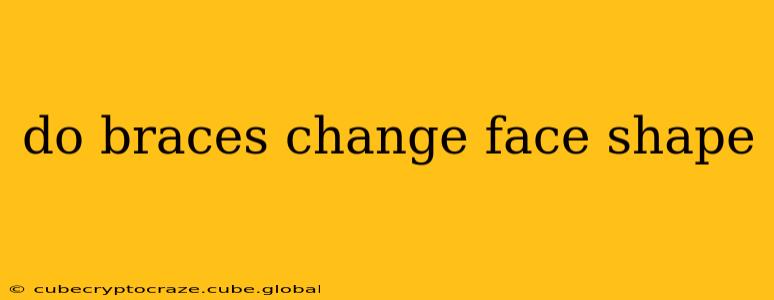Many people wonder if braces can alter their facial appearance. The answer is nuanced: while braces don't directly reshape the bone structure of your face, they can subtly influence its appearance by affecting the position of your teeth and jaw. This can lead to noticeable changes in your overall facial profile. Let's delve deeper into this complex topic.
How Do Braces Impact Facial Appearance?
Braces work by applying gentle, consistent pressure to shift teeth into their optimal positions. This process can indirectly influence the surrounding soft tissues, including muscles and skin. The changes are often subtle and gradual, but they can be significant enough for some individuals to notice.
Here's a breakdown of the potential effects:
-
Improved Tooth Alignment: The most obvious change is the straightening of teeth. Crooked or crowded teeth can create a less balanced facial appearance. Braces correct this, leading to a more harmonious and symmetrical smile. This, in turn, can improve the overall perception of your facial shape.
-
Jaw Position Adjustment: In some cases, braces can address jaw misalignment (malocclusion). By correcting an overbite, underbite, or crossbite, braces can subtly alter the projection of the jaw and chin, potentially leading to a noticeable change in facial profile. This is particularly true for individuals with significant jaw misalignment.
-
Changes in Cheek and Lip Appearance: As teeth move, the supporting soft tissues may also adjust. This can result in slight changes in the fullness of the cheeks or the position of the lips. These changes are usually minor but contribute to the overall shift in facial aesthetics.
Can Braces Make Your Face Look Thinner?
This is a common question, and the answer is: it depends. While braces don't directly cause weight loss, correcting a jaw misalignment that contributes to a rounder face can sometimes create the illusion of a slimmer face. This is because the repositioning of the teeth and jaw can improve facial symmetry and balance, making the face appear more defined.
However, it's crucial to manage expectations. Braces are primarily designed to improve oral health and dental function, not to drastically alter facial structure. Significant facial reshaping typically requires other procedures like orthognathic surgery.
Do Braces Cause Any Negative Effects on Facial Appearance?
In most cases, braces lead to positive aesthetic changes. However, there are potential minor drawbacks:
-
Temporary Swelling and Discomfort: During the initial stages of treatment, some patients experience slight swelling in the cheeks or lips. This is usually temporary and subsides as the treatment progresses.
-
Slight Changes in Lip Position: As mentioned earlier, the movement of teeth can subtly alter lip position. While usually subtle and positive, some individuals might experience a minor adjustment that they need to adapt to.
How Long Does it Take to See Changes in Face Shape After Braces?
The timeframe for noticeable changes in facial appearance varies greatly depending on the complexity of the orthodontic treatment and individual response. In some cases, changes might be subtle and gradual, taking the entire duration of the treatment (usually 1-3 years) to become fully apparent. In other instances, changes might be more immediate.
What are the Alternatives to Braces for Facial Reshaping?
If you are seeking more significant changes to your facial structure, braces alone may not be sufficient. Orthognathic surgery, a surgical procedure to correct jaw misalignment, can be considered in conjunction with orthodontic treatment for more substantial facial reshaping. Other procedures, such as fillers or facial contouring, could also address specific concerns. Consult a qualified specialist to determine the most suitable approach for your individual needs.
Can I predict how my face will change with braces?
Predicting the precise changes to your face with braces is difficult. While your orthodontist can provide a treatment plan outlining the anticipated tooth movement, the resulting soft tissue changes are less predictable. Individual responses vary, making it challenging to offer a definitive preview. Your orthodontist can discuss potential changes, but it’s ultimately a gradual process with individual results.
This comprehensive guide should answer most of your questions about how braces impact facial appearance. Remember, consulting with an experienced orthodontist is vital for personalized advice and treatment planning. They can assess your individual case and help manage your expectations regarding potential changes to your facial features.
